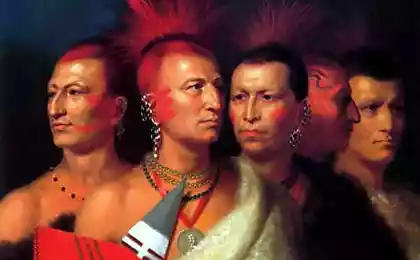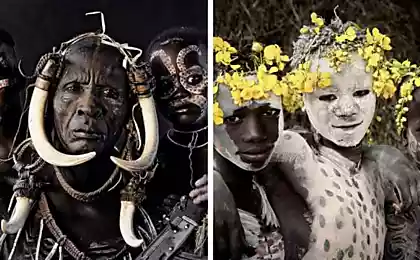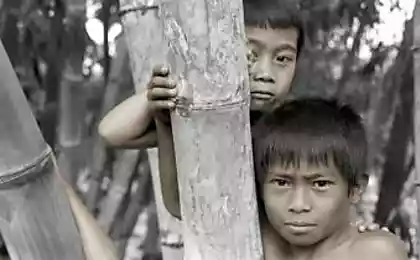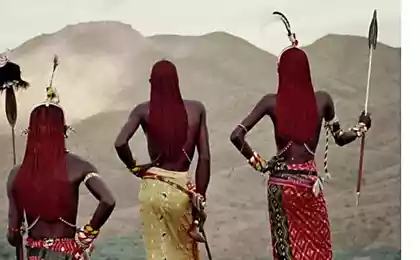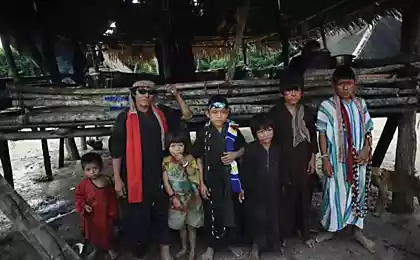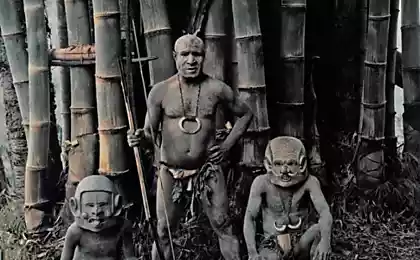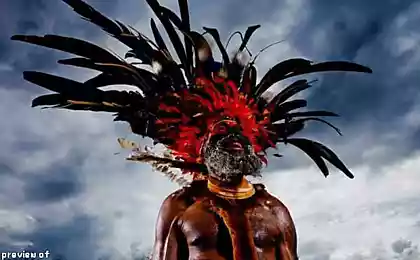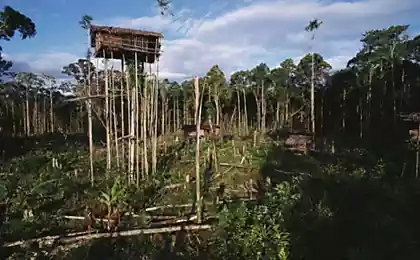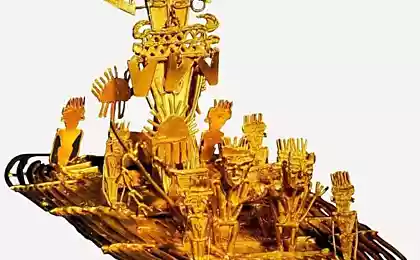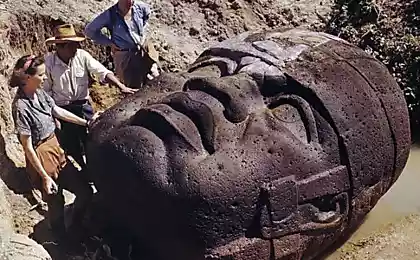685
10 of the most unique tribes
In today's world, where everyone lives on a schedule, working round the clock and without looking up from their cell phones, there are some groups of people concentrated in nature. The lifestyle of these tribes is no different from what they were centuries ago. Climate change and industrial development has greatly reduced their numbers, but at the moment, these 10 tribes still exist.
The Indians Kaiapo
Capo Brazilian tribe that lives along the Xingu river in 44 separate villages, connected barely visible trails. They call themselves mebengokre, which means “people of the big water”. Unfortunately, their “high water” strongly transformed, so how is the huge Belo Monte Dam on the Xingu river. Reservoir with an area of 668 square kilometers will flood 388 square kilometers of forest, partly destroying the habitat of the tribe Kayapo. The Indians fought against the invasion of modern man for many centuries, fought everyone from hunters and animal hunters to lumberjacks and miners rubber. They even successfully prevented the construction of the largest dam in 1989. Once their population was only 1,300 people, but has since grown to nearly 8,000. Today the question is how people will survive if their culture will be threatened. The members of the tribe Kayapo are famous for their body painting, agriculture, and colorful hats. Technology today permeate their life — Capo control motor boats, watching TV, or even harvest the forest on Facebook.
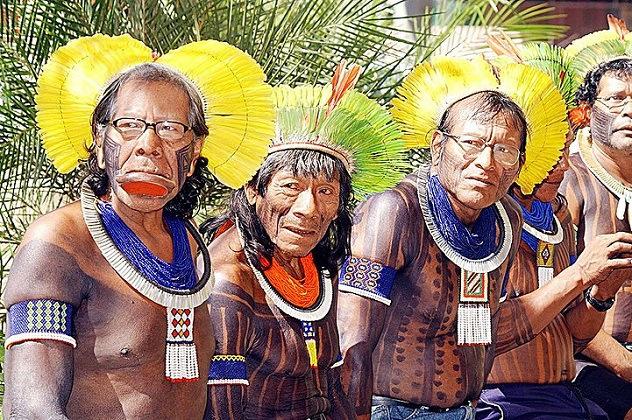
Kalash
Located in the Pakistani mountains, on the border with Taliban-controlled region of Afghanistan, is a most unusual tribe of white, European-looking people known as the Kalash. Many of the Kalash are blond hair and blue eyes that completely contrasted in relation to their neighbors with darker skin. Moreover, the Kalash tribe is different in physical characteristics, they are very different from Muslim culture. They are polytheistic and have a unique folklore, wine (which is forbidden in Muslim culture), wear brightly colored clothes and give a lot more freedom to women. They are resolutely happy, peace-loving people, who love to dance and organize numerous annual festivals. Nobody knows for sure, as light-skinned tribe appeared in the distant Pakistan, but the Kalash claim that they are long-lost descendants of the army of Alexander the Great. Evidence for DNA tests show that they had an infusion of European blood during the time of the conquests of Alexander, thus, it is likely that their stories are true. In the years surrounding the Kalash Muslims were persecuted and forced many to convert to Islam. Today, there were about 4 000-6 000 representatives of the tribe engaged primarily in agriculture.
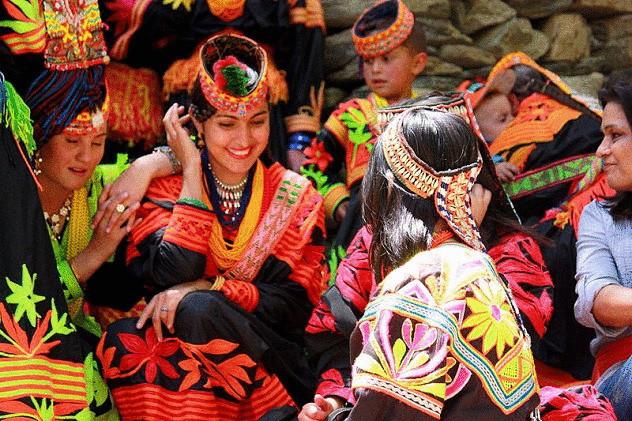
The Tribe Of Cahuilla
While southern California is most often associated with Hollywood, surfers and actors in the field are 9 Indian reservations inhabited by the ancient people of cahuilla. They lived in the Coachella Valley for over 3,000 years and settled there, when there was still a prehistoric Lake Cahuilla. Despite the problems with the disease, the gold rush and the prosecution, the tribe managed to survive, though it dwindled to 3,000 people. They lost most of their heritage and unique language of Kawila is on the verge of extinction. This dialect is a mixture of Utah and Aztec tongues that can speak a total of 35 elderly people. Currently a senior striving to pass on their language, “bird songs” and other cultural characteristics of the younger generation. Like most indigenous peoples of North America, they are faced with the problem of assimilation with the wider community, in an attempt to preserve their old traditions.
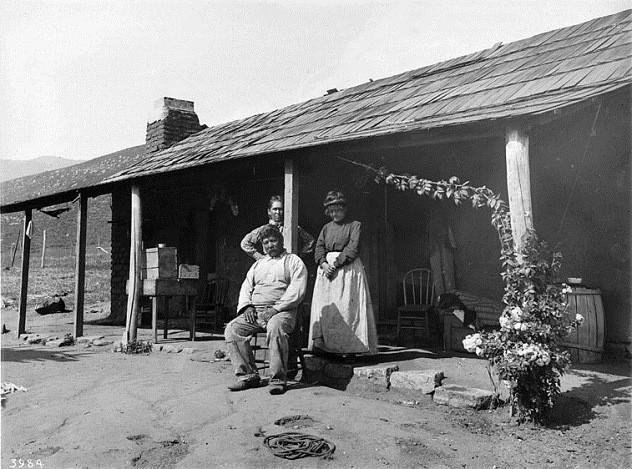
Tribe Spinifex
Tribe spinifex, or Pila Nguru — indigenous people living in the Big desert of Victoria. They live in one of the most sharp for the life of the climates for at least 15,000 years. Even after Europeans settled in Australia, this tribe was not affected, as they took too dry, inhospitable environment. That all changed in the 1950s, when the Land Spinifex not suitable for agriculture, was chosen for nuclear tests. In 1953 the British and Australian government detonated nuclear bombs in the homeland Spinifex without any consent and after a brief warning. The majority of aboriginal people were displaced and not back home until the end of the 1980s. After returning, they faced heavy opposition from trying by law to recognize the area of their property. Interestingly, their beautiful works of art helped to prove spinifex a deep connection with this land, after which they were recognized indigenous population in 1997. Their works of art received massive recognition and appeared at art exhibitions around the world. It is hard to count how many representatives of the tribe there at the moment, but one of their most numerous communities known as Cunthunter, there are approximately 180-220 people.

Batak
On the Philippine island of Palawan live the Batak people, a tribe of the most genetically diverse people on the planet. They are believed to belong Negroid-Australoid race that is vaguely associated with those people from whom we are all descended. This means that they are the descendants of one of the first groups that left Africa approximately 70,000 years ago and traveled from the Asian mainland to the Philippines around 20,000 years later. Typical Negroid, Batak have a small stature and strange, unusual hair. Traditionally, women wear sarongs, while the men cover the body only a loincloth and with feathers or jewels. The whole municipality working together to hunt and harvest, and then arrange the celebration. Overall, Batak is a shy, peaceful people who prefer to hide deep in the jungle, not engaging in confrotation with outsiders. Like other local tribes, disease, capture territories and other modern incursions devastated the Batak population. Currently, there are approximately 300-500 people. Ironically, among the biggest dangers for the tribe was the protection of the environment. The Philippine government banned logging in certain protected areas, and the Batak traditionally practice the felling of trees. Without the ability to efficiently grow food, many suffer from malnutrition.
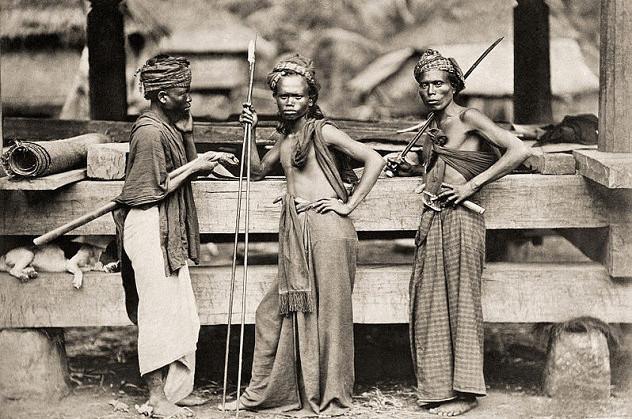
Adamancy
Adamancy also classified as Negroid, but because of their extremely short in height (adult males below 150 centimeters) they are usually referred to as pygmies. They inhabit the Andaman Islands in the Bay of Bengal. As of Batak, Andamans are one of the first groups who migrated from Africa and evolved in isolation until the 18th century. Until the 19th century, they didn't even know how to build a fire. Adamancy divided into separate tribes, each with their own culture and language. One group disappeared when its last member died at the age of 85 in 2010. Another group of Sentinels, violently resisting outside contacts, even in the modern technological world, very little is known about them. Those who are not integrated into the larger Indian culture, still live as their ancestors. For example, they use the only type of weapon — bow and arrow, to hunt the pig, a turtle and fish. Men and women together collect roots, tubers and honey. Obviously, their lifestyle works for them, as doctors assess the health and nutritional status of adamance as “optimal”. The biggest problems they have is the impact of Indian settlers and tourists who forced them to leave the land, bring disease and treat these people like animals in a Safari Park. Although the exact number of the tribe is not known, as some still live in isolation, there are approximately 400-500 existing andamansea.
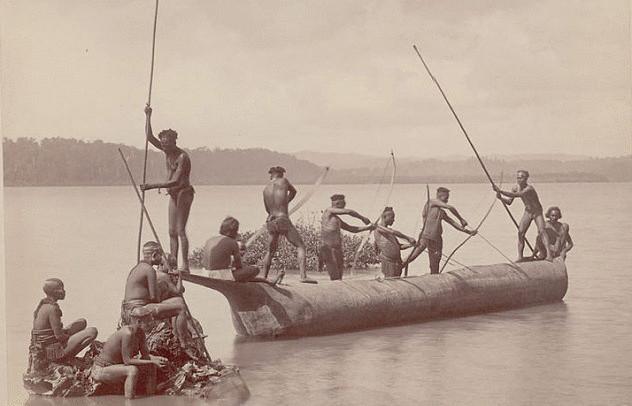
The Piraha Tribe
Although there are many small primitive tribes throughout Brazil and the Amazon, the piraha are allocated independently, because they have their own culture and language, unlike many other people on the planet. In this tribe there are some bizarre features. They have colors, numbers, past tense and the subordinate clause. At that time, as some would call this simplistic language, these features — the result values Piraha who live only for the present. In addition, because they live completely together, they don't need to normalize and divide the property. Many unnecessary words is eliminated when You have no history, nothing to follow and to trust only what I see. Overall, the Piraha differ from Westerners for almost everyone. They sincerely rejected all missionaries, like all modern technology. They have no leader and do not need to share resources with other people, or tribes. Even after hundreds of years of external contact, this group of 300 people remained mostly unchanged since ancient times.
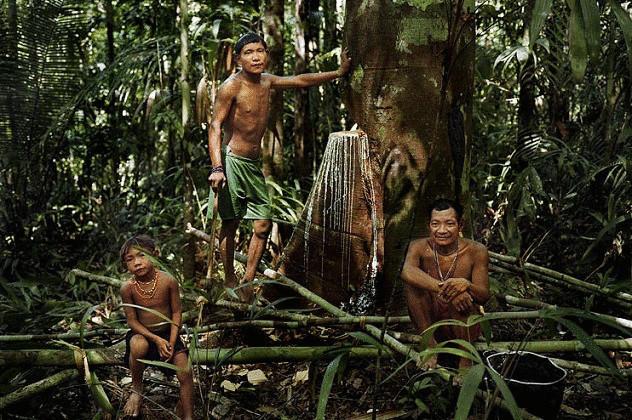
The People Of The Atoll, Takuu
The people of the Atoll, Takuu — Polynesian in origin but are considered one of the isolated cultures that live in the Melanesia region instead of the Polynesian triangle. Atoll Takuu there is a particularly different culture, which some call the most traditionally Polynesian. This is because the tribe of takuu extremely protective of their way of life and protected from suspicious strangers. They even made enforcement of the ban on missionaries for 40 years. They still live in traditional thatched buildings. Unlike most of us, spending most of the time to work, takuu dedicate 20-30 hours a week singing and dancing. Surprisingly, they have more than 1,000 songs, which they repeat from memory. 400 members of the tribe are somehow connected to each other, and manages one Manager. Unfortunately, climate change is likely to destroy the way of life, takuu because the ocean will soon swallow their island. Increasing levels of the seas are already polluted freshwater sources and flooded crops, and although the community has built a dam, they are rendered ineffective.
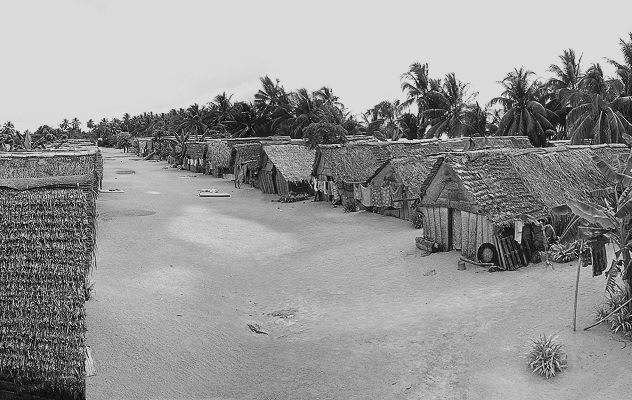
Tribe Of The Spirit
Spirit — the last group of nomadic shepherds of Mongolia with a history Dating back to the time of the dynasty Tang. There are about 300 members of the tribe, carefully preserving their cold homeland and believing in the sacred forest inhabited by the ghosts of their ancestors. In this cold, mountainous region with very little resources, because of the spirit rely on reindeer for milk, cheese, transportation, hunting and tourist attraction. However, due to the small number of the tribe, the lifestyle of the spirit is in jeopardy because the population of reindeer decreases rapidly. There are many factors contributing to this reduction, but the most important — excessive hunting and predation. Exacerbating the situation, the discovery of gold in Northern Mongolia has brought the mining industry which destroys local wildlife. With so many problems many young people leave their ancient roots and chooses life in the city.

The El-Molo
The ancient tribe, the El Molo in Kenya, the smallest tribe in the country is also faced with multiple threats. Because of the almost constant persecution of other groups, they have already isolated themselves on the remote shoreline of Lake Turkana, but still can't breathe easy. The tribe depends exclusively on fish and aquatic animals for survival and trade. Unfortunately, the lake evaporates to 30 centimeters each year. This contributes to water pollution and reduced fish populations. Now they needed a week to catch same amount of fish they had previously caught for the day. The El Molo have to take a chance and dive into the crocodile-infested waters to catch fish. There is a fierce competition for the fish, and the El Molo are under threat of invasion by the warring neighboring tribes. In addition to these environmental hazards, the tribe tolerates outbreaks of cholera every few years, which have consumed most people. The average life expectancy of the El Molo is just 30-45 years. There are approximately 200 people, and anthropologists estimate that only 40 of them are “pure” El Molo.
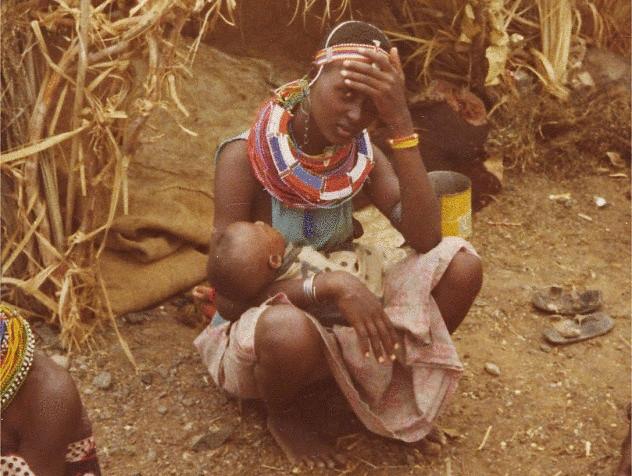
Source: lifeglobe.net/
The Indians Kaiapo
Capo Brazilian tribe that lives along the Xingu river in 44 separate villages, connected barely visible trails. They call themselves mebengokre, which means “people of the big water”. Unfortunately, their “high water” strongly transformed, so how is the huge Belo Monte Dam on the Xingu river. Reservoir with an area of 668 square kilometers will flood 388 square kilometers of forest, partly destroying the habitat of the tribe Kayapo. The Indians fought against the invasion of modern man for many centuries, fought everyone from hunters and animal hunters to lumberjacks and miners rubber. They even successfully prevented the construction of the largest dam in 1989. Once their population was only 1,300 people, but has since grown to nearly 8,000. Today the question is how people will survive if their culture will be threatened. The members of the tribe Kayapo are famous for their body painting, agriculture, and colorful hats. Technology today permeate their life — Capo control motor boats, watching TV, or even harvest the forest on Facebook.

Kalash
Located in the Pakistani mountains, on the border with Taliban-controlled region of Afghanistan, is a most unusual tribe of white, European-looking people known as the Kalash. Many of the Kalash are blond hair and blue eyes that completely contrasted in relation to their neighbors with darker skin. Moreover, the Kalash tribe is different in physical characteristics, they are very different from Muslim culture. They are polytheistic and have a unique folklore, wine (which is forbidden in Muslim culture), wear brightly colored clothes and give a lot more freedom to women. They are resolutely happy, peace-loving people, who love to dance and organize numerous annual festivals. Nobody knows for sure, as light-skinned tribe appeared in the distant Pakistan, but the Kalash claim that they are long-lost descendants of the army of Alexander the Great. Evidence for DNA tests show that they had an infusion of European blood during the time of the conquests of Alexander, thus, it is likely that their stories are true. In the years surrounding the Kalash Muslims were persecuted and forced many to convert to Islam. Today, there were about 4 000-6 000 representatives of the tribe engaged primarily in agriculture.

The Tribe Of Cahuilla
While southern California is most often associated with Hollywood, surfers and actors in the field are 9 Indian reservations inhabited by the ancient people of cahuilla. They lived in the Coachella Valley for over 3,000 years and settled there, when there was still a prehistoric Lake Cahuilla. Despite the problems with the disease, the gold rush and the prosecution, the tribe managed to survive, though it dwindled to 3,000 people. They lost most of their heritage and unique language of Kawila is on the verge of extinction. This dialect is a mixture of Utah and Aztec tongues that can speak a total of 35 elderly people. Currently a senior striving to pass on their language, “bird songs” and other cultural characteristics of the younger generation. Like most indigenous peoples of North America, they are faced with the problem of assimilation with the wider community, in an attempt to preserve their old traditions.

Tribe Spinifex
Tribe spinifex, or Pila Nguru — indigenous people living in the Big desert of Victoria. They live in one of the most sharp for the life of the climates for at least 15,000 years. Even after Europeans settled in Australia, this tribe was not affected, as they took too dry, inhospitable environment. That all changed in the 1950s, when the Land Spinifex not suitable for agriculture, was chosen for nuclear tests. In 1953 the British and Australian government detonated nuclear bombs in the homeland Spinifex without any consent and after a brief warning. The majority of aboriginal people were displaced and not back home until the end of the 1980s. After returning, they faced heavy opposition from trying by law to recognize the area of their property. Interestingly, their beautiful works of art helped to prove spinifex a deep connection with this land, after which they were recognized indigenous population in 1997. Their works of art received massive recognition and appeared at art exhibitions around the world. It is hard to count how many representatives of the tribe there at the moment, but one of their most numerous communities known as Cunthunter, there are approximately 180-220 people.

Batak
On the Philippine island of Palawan live the Batak people, a tribe of the most genetically diverse people on the planet. They are believed to belong Negroid-Australoid race that is vaguely associated with those people from whom we are all descended. This means that they are the descendants of one of the first groups that left Africa approximately 70,000 years ago and traveled from the Asian mainland to the Philippines around 20,000 years later. Typical Negroid, Batak have a small stature and strange, unusual hair. Traditionally, women wear sarongs, while the men cover the body only a loincloth and with feathers or jewels. The whole municipality working together to hunt and harvest, and then arrange the celebration. Overall, Batak is a shy, peaceful people who prefer to hide deep in the jungle, not engaging in confrotation with outsiders. Like other local tribes, disease, capture territories and other modern incursions devastated the Batak population. Currently, there are approximately 300-500 people. Ironically, among the biggest dangers for the tribe was the protection of the environment. The Philippine government banned logging in certain protected areas, and the Batak traditionally practice the felling of trees. Without the ability to efficiently grow food, many suffer from malnutrition.

Adamancy
Adamancy also classified as Negroid, but because of their extremely short in height (adult males below 150 centimeters) they are usually referred to as pygmies. They inhabit the Andaman Islands in the Bay of Bengal. As of Batak, Andamans are one of the first groups who migrated from Africa and evolved in isolation until the 18th century. Until the 19th century, they didn't even know how to build a fire. Adamancy divided into separate tribes, each with their own culture and language. One group disappeared when its last member died at the age of 85 in 2010. Another group of Sentinels, violently resisting outside contacts, even in the modern technological world, very little is known about them. Those who are not integrated into the larger Indian culture, still live as their ancestors. For example, they use the only type of weapon — bow and arrow, to hunt the pig, a turtle and fish. Men and women together collect roots, tubers and honey. Obviously, their lifestyle works for them, as doctors assess the health and nutritional status of adamance as “optimal”. The biggest problems they have is the impact of Indian settlers and tourists who forced them to leave the land, bring disease and treat these people like animals in a Safari Park. Although the exact number of the tribe is not known, as some still live in isolation, there are approximately 400-500 existing andamansea.

The Piraha Tribe
Although there are many small primitive tribes throughout Brazil and the Amazon, the piraha are allocated independently, because they have their own culture and language, unlike many other people on the planet. In this tribe there are some bizarre features. They have colors, numbers, past tense and the subordinate clause. At that time, as some would call this simplistic language, these features — the result values Piraha who live only for the present. In addition, because they live completely together, they don't need to normalize and divide the property. Many unnecessary words is eliminated when You have no history, nothing to follow and to trust only what I see. Overall, the Piraha differ from Westerners for almost everyone. They sincerely rejected all missionaries, like all modern technology. They have no leader and do not need to share resources with other people, or tribes. Even after hundreds of years of external contact, this group of 300 people remained mostly unchanged since ancient times.

The People Of The Atoll, Takuu
The people of the Atoll, Takuu — Polynesian in origin but are considered one of the isolated cultures that live in the Melanesia region instead of the Polynesian triangle. Atoll Takuu there is a particularly different culture, which some call the most traditionally Polynesian. This is because the tribe of takuu extremely protective of their way of life and protected from suspicious strangers. They even made enforcement of the ban on missionaries for 40 years. They still live in traditional thatched buildings. Unlike most of us, spending most of the time to work, takuu dedicate 20-30 hours a week singing and dancing. Surprisingly, they have more than 1,000 songs, which they repeat from memory. 400 members of the tribe are somehow connected to each other, and manages one Manager. Unfortunately, climate change is likely to destroy the way of life, takuu because the ocean will soon swallow their island. Increasing levels of the seas are already polluted freshwater sources and flooded crops, and although the community has built a dam, they are rendered ineffective.

Tribe Of The Spirit
Spirit — the last group of nomadic shepherds of Mongolia with a history Dating back to the time of the dynasty Tang. There are about 300 members of the tribe, carefully preserving their cold homeland and believing in the sacred forest inhabited by the ghosts of their ancestors. In this cold, mountainous region with very little resources, because of the spirit rely on reindeer for milk, cheese, transportation, hunting and tourist attraction. However, due to the small number of the tribe, the lifestyle of the spirit is in jeopardy because the population of reindeer decreases rapidly. There are many factors contributing to this reduction, but the most important — excessive hunting and predation. Exacerbating the situation, the discovery of gold in Northern Mongolia has brought the mining industry which destroys local wildlife. With so many problems many young people leave their ancient roots and chooses life in the city.

The El-Molo
The ancient tribe, the El Molo in Kenya, the smallest tribe in the country is also faced with multiple threats. Because of the almost constant persecution of other groups, they have already isolated themselves on the remote shoreline of Lake Turkana, but still can't breathe easy. The tribe depends exclusively on fish and aquatic animals for survival and trade. Unfortunately, the lake evaporates to 30 centimeters each year. This contributes to water pollution and reduced fish populations. Now they needed a week to catch same amount of fish they had previously caught for the day. The El Molo have to take a chance and dive into the crocodile-infested waters to catch fish. There is a fierce competition for the fish, and the El Molo are under threat of invasion by the warring neighboring tribes. In addition to these environmental hazards, the tribe tolerates outbreaks of cholera every few years, which have consumed most people. The average life expectancy of the El Molo is just 30-45 years. There are approximately 200 people, and anthropologists estimate that only 40 of them are “pure” El Molo.

Source: lifeglobe.net/
Swings that swing at an altitude of 2660 meters
Universal compact cord for fast charging of electric vehicles
